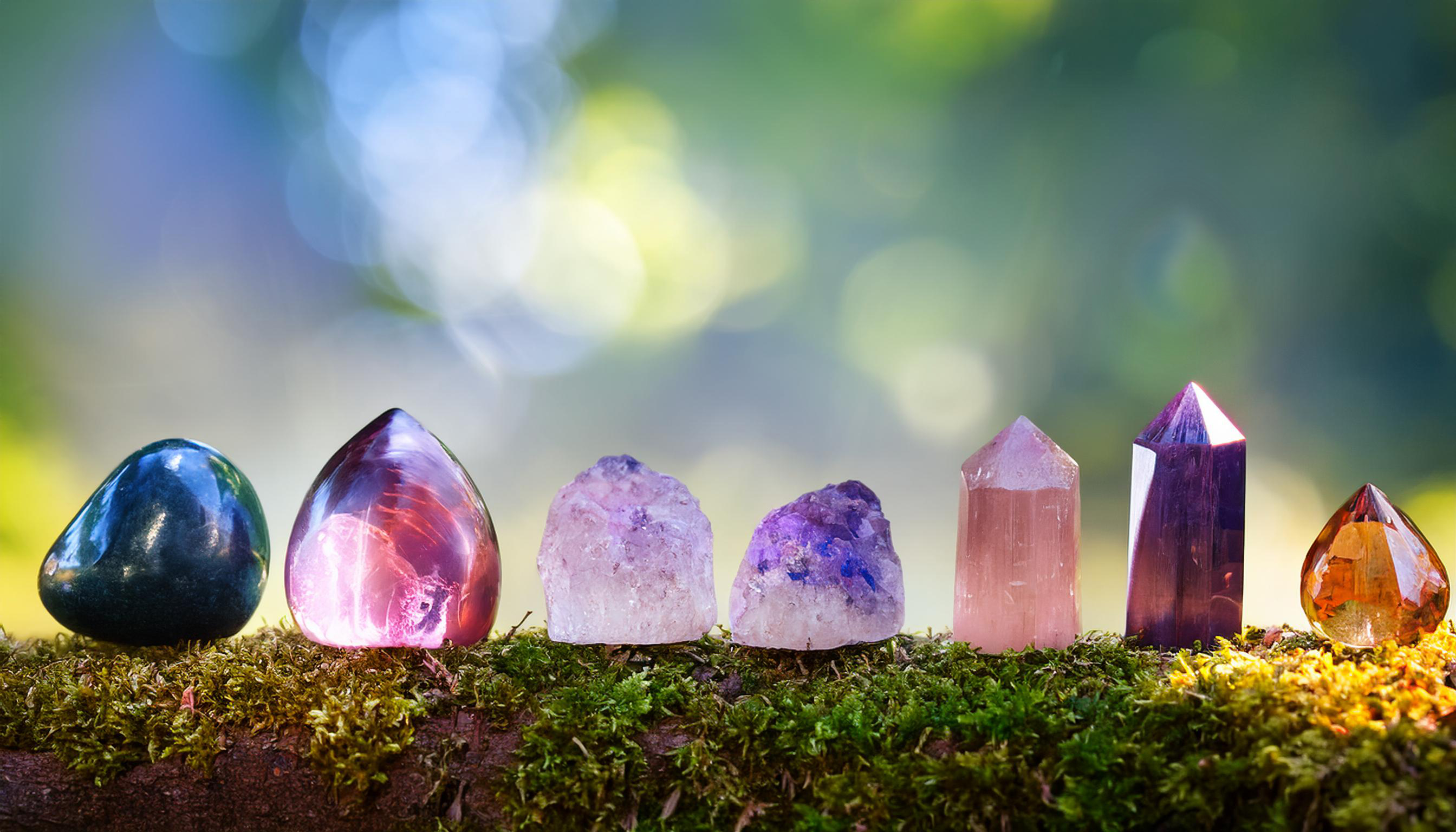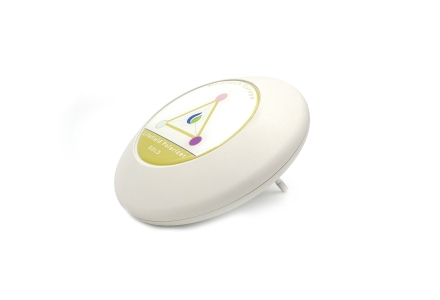
Crystals have fascinated mankind for centuries. From the stunning beauty of gemstones to the fascinating energetic effects attributed to them, crystals evoke a sense of mystery and wonder. But what exactly are crystals? How are they different from minerals and gemstones? And why are they so valued both in the technology industry and in spiritual practices? In this blog, we dive into the world of crystals: from their structures and industrial applications to their supposed energetic power. We also cover Meditech Europe's personal polarizers and lifefield polarizers that contain crystals. Be amazed by the versatility of these extraordinary natural phenomena and discover how crystals might also enrich your life.
What are crystals?
Crystals are solids whose atoms, molecules or ions are arranged in an ordered and repeating pattern, resulting in a crystal lattice. This lattice determines the unique shapes and properties of crystals. In nature, crystals often form deep within the earth under the influence of heat, pressure and chemical processes. For example, when magma cools slowly, minerals such as quartz, amethyst and pyrite can crystallize. Crystals can also form in cavities of rocks, where minerals dissolve in water and gradually deposit into perfectly structured shapes. This process can take millions of years and produces the impressive crystals found in nature.
The difference between minerals, crystals, rocks and gemstones
Crystals, minerals, gemstones and rocks are often mixed up, but there are distinct differences between these terms. We list them briefly below:
A mineral is a naturally occurring, inorganic material with a solid chemical composition and a crystalline structure. They can occur in the form of crystals or as part of rocks. Examples include quartz, calcite and pyrite.
A crystal is a specific form of a mineral in which the atoms are arranged in an ordered lattice, resulting in the geometric shapes that characterize crystals. Crystals can form from minerals when they crystallize under certain conditions (such as temperature and pressure). Not all minerals form readily visible crystals, but all crystals, by definition, are minerals.
Rocks, on the other hand, consist of a mixture of minerals and can contain both crystalline and amorphous (non-crystalline) components. Well-known rocks such as granite, for example, consist of quartz, feldspar and mica.
Gemstones are rare, often transparent minerals or rocks valued for their beauty and hardness. Consider diamonds, rubies and sapphires. Although all gemstones are minerals or rocks, not every mineral or rock is a gemstone.
In summary, minerals are the building blocks, crystals are the structured forms of minerals, rocks are combinations of minerals, and gemstones are valuable minerals or rocks used in jewelry.
Different crystal structures
Crystals form according to fixed patterns, known as crystal lattices. These lattices are based on the way atoms or molecules repeat in three-dimensional space. There are seven main types of crystal systems:
The cubic system, as in pyrite and diamond, has equal sides and right angles, providing symmetrical shapes.
Tetragonal crystals, such as zircon, resemble cubic crystals but have one longer axis.
The orthorombic system, in which topaz crystallizes, has rectangular axes of unequal length.
Hexagonal crystals, such as quartz, have a six-sided symmetry.
The trigonal system, often associated with minerals such as calcite, resembles the hexagonal but has a different internal arrangement.
Monoclinic crystals, such as gypsum, have oblique angles, while the triclinic system, which contains minerals such as labradorite, has the least symmetrical and most irregular structure.
These crystal lattices determine not only the external shape of crystals, but also their physical and optical properties.
The difference between natural and synthetic crystals
Crystals can either form naturally in the earth or be synthesized in laboratories.
Natural crystals form over long periods of time under the influence of geological processes such as cooling of magma, mineralization in rocks or evaporation of liquids. This can take millions of years and produces unique crystals with irregularities, inclusions and variations in color and structure.
Synthetic crystals, on the other hand, are grown under controlled conditions in laboratories using techniques such as the hydrothermal method or the Verneuil method. These crystals have the same chemical composition and structure as their natural counterparts, but often lack the irregularities and rarity that make natural crystals so desirable. Synthetic crystals are widely used in technology, such as in semiconductors and laser optics, as well as in jewelry as an alternative to rare gemstones.
Applications in Industry
Crystals play a crucial role in modern industry due to their unique physical and chemical properties. Synthetic crystals are primarily used in industry because they have predictable properties and can be produced in large quantities.
One of the best-known applications is in quartz watches, where a small quartz crystal vibrates under electrical voltage to enable highly accurate time measurement.
In addition, crystals are widely used in electronics, such as in semiconductors and microchips, where silicon crystals form the basis for virtually all computer and communications technology.
In the telecommunications industry, crystals are used in radio transmitters and receivers, where piezoelectric crystals can stabilize and amplify signals.
Crystals are also indispensable in the optical industry: from lasers in medical and scientific devices to synthetic sapphires for scratch-resistant glass in watches and smartphones. Thanks to their conductive, light-refracting and vibration-sensitive properties, crystals remain an essential part of technological progress and innovation.
The energetic power of crystals
In addition, crystals have been used for centuries in spiritual and energetic practices because of their supposed ability to conduct, store and influence energy. Many traditions believe that crystals emit vibrations or frequencies that can resonate with a person's energy field, also known as the aura. This is said to help balance emotions, reinforce intentions and promote harmony.
Different crystals are associated with specific energetic properties. For example, amethyst is said to promote tranquility and spiritual insights, while rose quartz is considered a stone of love and emotional healing. Rock crystal, often considered a universal amplifier, is said to be able to amplify the energy of other stones and have a purifying effect. Crystals are often used in meditation, chakra healing and reiki, where they are placed on the body or placed in space to support and harmonize a particular energy.
For many people, crystals play an important role and are seen as powerful tools for personal growth, spiritual development and balance.
Lifefield Polarizers and Personal Polarizers
An interesting example of how crystals are used in modern applications because of their energetic properties is Meditech Europe's lifefield polarizers and personal polarizers. These devices are designed to support and balance the energetic field of a person or living environment.
They include special crystals that enhance the polarizers' action and make them more specific to the user's needs. lifefield polarizers are intended to improve the energetic balance of the environment, while personal polarizers, worn close to the body, are aimed at optimizing the personal energy field. Through the use of crystals, which are believed to emit specific vibrations, these devices can contribute to a sense of balance, focus and harmony. Combining the healing properties of crystals with advanced technology in the polarizers makes these products particularly effective for those seeking energetic support in their daily lives.
Conclusion
Crystals continue to fascinate humanity, both through their scientific properties and their spiritual significance. Whether it is the precision of quartz in watches, the powerful effect of silicon in electronics, or the energetic influence many experience during meditation and mindfulness crystals prove their versatility time and again.
Meditech Europe's personal polarizers and lifefield Polarizers, in which crystals play an important role, also show how ancient wisdom meets modern technology.
We also offer crystal soap in our cosmetics department, where the power of gemstones merges with the refreshing essence of high-quality soap.
Whether you are drawn to the scientific side, the aesthetic beauty or the energetic effects, crystals offer something for everyone. They remind us that there is still so much to discover, both in the material and spiritual worlds. Perhaps they will inspire you to explore for yourself. One thing is certain: the magic of crystals is timeless and continues to challenge us to look beyond what is visible to the naked eye.
Do you have questions about crystals, personal polarizers, lifefield polarizers or our crystal soap? Please feel free to contact us. We are ready to answer all your questions and provide you with all the information you need.









